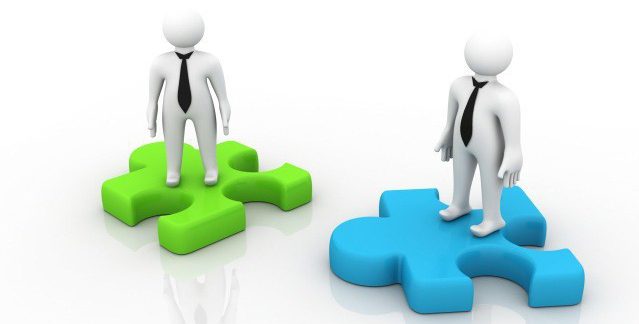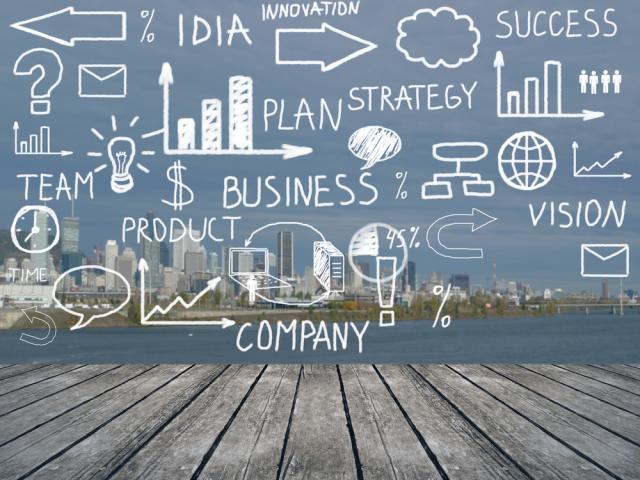Probably every person who at least one day worked for the "owner" wants to start his own business and be his own boss. But in order to open a business that will bring good income, you need to correctly set the financial model of economic activity.
The financial model of the enterprise
Why is this necessary? In order to have a correct idea of future income, about what level the fixed and variable expenses of the enterprise will have, to understand where it will be necessary to strive and what financial policy to use during decision-making.

The basis for building a successful business is its commercial component. According to economic theory, money is a blessing that can and should generate new blessings. If you start your own business, you need to understand that its profitability should be in the first place, otherwise a person will be engaged in patronage.
You cannot work at a loss
Profit equals the difference between income and expenses, which are divided into fixed and variable costs of the enterprise. In the case when expenses are more than income, profit is transformed into loss. The main task of the entrepreneur is to ensure that the business brings maximum income with minimal use of available resources.
This means that you should always strive to sell as many goods or services as possible, while reducing the level of enterprise costs.

If with income more or less everything is clear (how much I made, how much I sold), then with expenses it’s much more complicated. In this article, we will consider fixed and variable costs, as well as how to optimize costs and find a middle ground.
In this article, costs, costs and expenses, as well as in the economic literature, will be used as synonyms. So what are the types of costs?
Types of expenses
All costs of the enterprise can be divided into fixed and variable costs. This separation allows for the efficient implementation of budgeting and planning of the necessary resources for the conduct of economic activity of the enterprise.
Fixed costs - these are costs whose level does not depend on the volume of output. That is, no matter how many units you produce, your fixed costs will not change.
Variable and conditionally fixed costs differently affect production activities. Why conditionally constant? Because not all types of expenses can be classified as constant, since they can change their properties and accounting procedures from time to time.
What are the variables and fixed costs include?
For example, such expenses include salaries of administrative and managerial personnel, but if they receive money regardless of the financial results of the enterprise. Despite the fact that in the West, managers have long been earning on their managerial and organizational skills, increasing their client base and expanding markets, at most enterprises of the Russian Federation, heads of various structures receive stable monthly earnings without reference to the results of their work.

This leads to the fact that a person simply does not have an incentive to improve something in his work. Because of this, labor productivity is at a low level, and the desire to move forward towards new technological processes is generally at zero.
Fixed costs
In addition to the salaries of managers, fixed payments include rental payments.Imagine that you are engaged in the tourism business and you do not have your own premises.
In this case, you will be forced to pay someone to rent a commercial property. And no one says that this is the worst option. The cost of building your own office from scratch is very high and in many cases will not pay off even in 5-10 years, if the business belongs to the small or middle class.
Therefore, many prefer to take the necessary square meters as a rental. And you can immediately guess that regardless of whether your business went well or if you are in deep loss, the landlord will demand the monthly payment indicated in the contract.
What can be even more stable in accounting than paying salaries? This is depreciation. Any fixed asset should be amortized from month to month until its initial value is zero.
The methods for calculating depreciation can be different, but, of course, within the framework of the law. These monthly expenses are also attributed to the fixed costs of the enterprise.
There are many more such examples: communication services, communications, garbage removal or processing, providing the necessary working conditions, etc. Their main feature is that they are easy to count both in the current period and in the future.
Variable costs
Such costs are those that vary in direct proportion to the volume of products or services provided.
For example, there is such a line in the balance sheet as raw materials. They indicate the total value of those funds that are necessary for the enterprise for production activities.
Suppose you need 2 square meters of wood to produce one wooden crate. Accordingly, to create a batch of 100 such product units, you will need 200 square meters of material. Therefore, such costs can be safely attributed to variables.

Salary can relate not only to fixed, but also to variable costs. This will be the case when:
- the changed volume of production requires a change in the number of employees employed in the manufacturing process;
- workers receive interest that corresponds to deviations in the working rate of production.
In such circumstances, it is quite difficult to plan the amount of labor costs in the long term, since it will depend on at least two factors.
Also, in the process of production activity, fuel and various kinds of energy resources are consumed: light, gas, water. If all these resources are used directly in the manufacturing process (for example, car manufacturing), it will be logical that a large batch of products will require an increased amount of energy consumed.
Why do you need to know what fixed and variable costs exist?
Of course, such a classification of costs is needed to optimize the cost structure in order to increase profits. That is, you can immediately understand at what costs you can save, and which will be in any case, and reduce them only when the level of production is reduced. What does the analysis of variables and fixed costs look like?

Suppose you produce furniture at an industrial level. You have the following cost items:
- raw materials and supplies;
- wage;
- depreciation;
- light, gas, water;
- others.
So far, everything is easy and clear.
The first step is to divide all of this into fixed and variable costs.
Permanent:
- Salaries of directors, accountants, economists, lawyers.
- Depreciation deductions.
- Used electrical energy for lighting.
Variables include the following.
- Wages of workers, the normalized amount of which depends on the volume of furniture produced (one or two shifts, the number of people in one assembly box, etc.).
- Raw materials necessary for the production of one unit of production (wood, metal, fabric, bolts, nuts, screws, etc.).
- Gas or electricity, if these resources are consumed directly for the manufacture of furniture. For example, this is consumption electricity by various machines for collecting furniture.
The impact of costs on the cost of production
So, you have painted all the expenses of your business. Now let's see what role fixed and variable costs play in production costs. It is necessary to sort out all fixed costs and see how the structure of the enterprise can be optimized so that less managerial personnel are involved in the manufacturing process.

The composition of fixed and variable costs indicated above shows where to start. You can save on energy either by switching to alternative sources, or during modernization, in order to increase the level of efficiency of equipment.
After that, it’s worth sorting out all the variable costs, tracking which of them are more or less dependent on external factors, and which ones can be calculated with confidence.
Once you understand the cost structure, you can easily transform any business to the needs and requirements of any owner and his strategic plans.
If your goal is to reduce the cost of production in order to win several positions in the sales market, then it is worth paying more attention to variable costs.
Of course, as soon as you understand what is related to fixed and variable costs, you will already be easy to navigate and quickly understand where you need to “tighten your tails” and where you can “loose your belts”.








